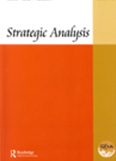The French Quest for NATO
France has taken over the half-yearly presidency of the European Union (EU) Council from Slovenia on July 1. The change of guard at the helm of the EU is a routine affair. However, the French presidency of the Union seems to point to a new impetus in EU affairs, as it is the first opportunity after Nicolas Sarkozy took the reins at The Élysée Palace. At present European affairs are more or less a rerun of the summer of 2005 when the French and Dutch electorates rejected the EU Constitution. This experience is again being enacted with Irish voters rejecting the Lisbon Treaty in June.
- Alok Rashmi Mukhopadhyay
- July 07, 2008






